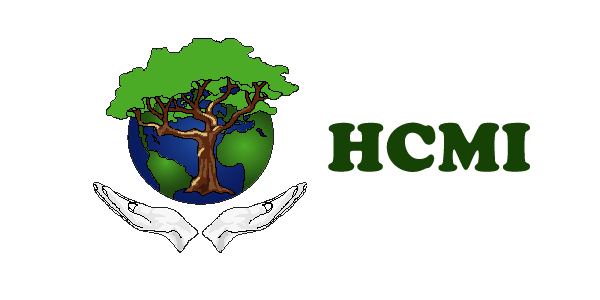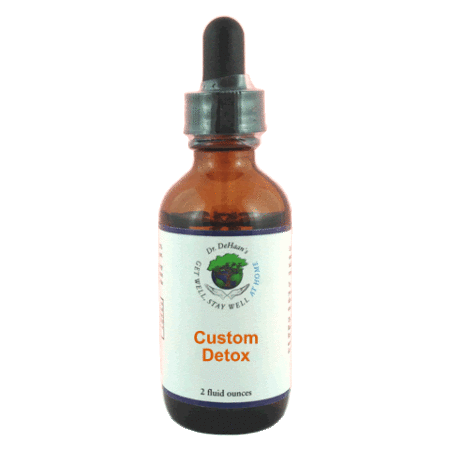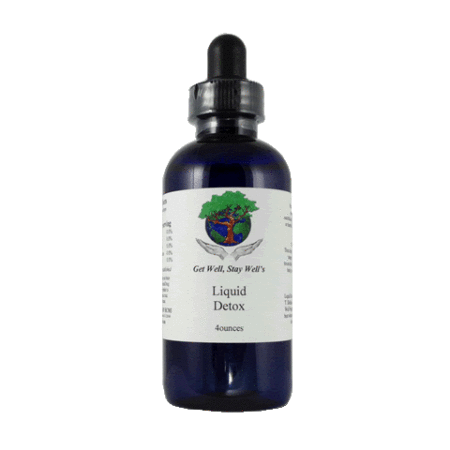 The natural habitat for Bordatella is the epithelial cells of the respiratory system. The most thoroughly researched of the Bordetella species are B. bronchiseptica, B. pertussis and B. parapertussis. Of the Bordatella genus, these are the species that cause respiratory diseases, primarily pertussis, often called whooping cough. Considered CONTAGIOUS!
The natural habitat for Bordatella is the epithelial cells of the respiratory system. The most thoroughly researched of the Bordetella species are B. bronchiseptica, B. pertussis and B. parapertussis. Of the Bordatella genus, these are the species that cause respiratory diseases, primarily pertussis, often called whooping cough. Considered CONTAGIOUS!
Symptoms are initially mild, then develop into severe coughing fits which produce the namesake high-pitched "whoop" sound in infected babies and children when they inhale air after coughing. The coughing stage lasts for approximately six weeks before subsiding. In some countries, this disease is called the 100 days' cough or cough of 100 days. The classic symptoms of pertussis are a paroxysmal cough, inspiratory whoop, and vomiting after coughing. The cough from pertussis has been documented to cause subconjunctival hemorrhages, rib fractures, urinary incontinence, hernias, post-cough fainting, and vertebral artery dissection.
The incubation period is typically seven to ten days in infants or young children, after which there are usually mild respiratory symptoms, mild coughing, sneezing, or runny nose. This is known as the catarrhal stage. After one to two weeks, the coughing typically develops into uncontrollable fits, each with five to ten forceful coughs, followed by a high-pitched "whoop" sound in younger children, or a gasping sound in older children, as the patient struggles to breathe in afterwards (paroxysmal stage). Fits can occur out of nowhere or can be triggered by yawning, stretching, laughing, eating or yelling. They usually occur in groups, with multiple episodes every hour around the clock.
Transmission occurs by direct contact, or via respiratory aerosol droplets, or fomites. Bacteria initially adhere to ciliated epithelial cells in the nasopharynx. The initial catarrhal phase of infection produces symptoms similar to those of the common cold and during this period, large numbers of bacteria can be recovered from the pharynx. Next the bacteria proliferate and spread further into the respiratory tract, where the secretion of toxins causes ciliostasis and facilitates the entry of bacteria to tracheal/bronchial ciliated cells.
B. bronchiseptica causes several diseases in other mammals, including kennel cough and atrophic rhinitis in dogs and pigs. B. bronchiseptica rarely infects healthy humans though disease in immunocompromised patients has been reported. Other members of the genus cause similar diseases in other mammals, and in birds (B. hinzii, B. avium).
 Dr. DeHaan does NOT believe the DPT vaccine (or any vaccine) is the best treatment or prevention for possible signs of Bordatella. There is generally an alternative to antibiotics and vaccinations. If symptoms of whooping cough are present, use this remedy along with the Cough remedy (symptom section). Use a spoonful of pure, raw honey as a cough syrup as often as needed. If used in its raw form it is also antibacterial. Another great home remedy to take (get ingredients from your local health food store) is 1 teaspoon of Fenugreek seeds, 1 cup water, 1 teaspoon of fresh ginger root, with a dash of honey. Bring all of these to a boil and then sip it through the day as your daily herbal tonic. Make a new batch and repeat each day as long as needed.
Dr. DeHaan does NOT believe the DPT vaccine (or any vaccine) is the best treatment or prevention for possible signs of Bordatella. There is generally an alternative to antibiotics and vaccinations. If symptoms of whooping cough are present, use this remedy along with the Cough remedy (symptom section). Use a spoonful of pure, raw honey as a cough syrup as often as needed. If used in its raw form it is also antibacterial. Another great home remedy to take (get ingredients from your local health food store) is 1 teaspoon of Fenugreek seeds, 1 cup water, 1 teaspoon of fresh ginger root, with a dash of honey. Bring all of these to a boil and then sip it through the day as your daily herbal tonic. Make a new batch and repeat each day as long as needed.
This Quantum Formula antidotes the various species in the Bordatella genus, as well as pertussis toxin[subunit2,3,4,5], protein adhesions [filamentous haemaglutinin, pertactin, fimbriae, AB5-type exotoxin, ciliostasis], tracheal cytotoxin peptidoglycan, adenylate cyclase toxin, adenosine triphosphate, cyclic adenosine monophosphate, calcium influx, phosphorylating and flagellin gene.
 The natural habitat for Enterococcus is in the gastrointestinal tract of a multitude of animals and humans. Common clinical infections caused by Enterococcus include: urinary tract infections, bacteremia, bacterial endocarditis, diverticulitis, and meningitis.
The natural habitat for Enterococcus is in the gastrointestinal tract of a multitude of animals and humans. Common clinical infections caused by Enterococcus include: urinary tract infections, bacteremia, bacterial endocarditis, diverticulitis, and meningitis.


 Corynebacteria species are commonly found in nature's soil, water, plants, and food products. With exception to diphtheria, they can even be found in the mucosa and normal skin flora of humans and animals. Some species are known for their pathogenic effects in humans and other animals. Perhaps the most notable one is C. diphtheriae, which produces diphtheria toxin. There are a few other species that can cause disease, but they typically affect only those with immunocompromised systems.
Corynebacteria species are commonly found in nature's soil, water, plants, and food products. With exception to diphtheria, they can even be found in the mucosa and normal skin flora of humans and animals. Some species are known for their pathogenic effects in humans and other animals. Perhaps the most notable one is C. diphtheriae, which produces diphtheria toxin. There are a few other species that can cause disease, but they typically affect only those with immunocompromised systems. The natural habitat for Clostridium species are soil, water and the gastrointestinal tract of animals and humans. The Clostridium genus includes common free-living bacteria as well as important pathogens. Some of the main species and how you might be exposed to them include:
The natural habitat for Clostridium species are soil, water and the gastrointestinal tract of animals and humans. The Clostridium genus includes common free-living bacteria as well as important pathogens. Some of the main species and how you might be exposed to them include: This genus of bacteria contains just a few species which were originally thought to be part of the Chlamydia genus because their genetic coding is almost 95% similar. Each one is listed below, they are all able to cause diseases in humans.
This genus of bacteria contains just a few species which were originally thought to be part of the Chlamydia genus because their genetic coding is almost 95% similar. Each one is listed below, they are all able to cause diseases in humans. The natural habitat for Chlamydia is disputable. Some say it is the intestinal tract and others say it is the genitor-urinary tract. Either way, it is one of the most common sexually transmitted infections (STI) worldwide. It is estimated that about 1 million individuals in the United States are infected with chlamydia. It is quite common for a person to have chlamydia and exhibit no symptoms at all. In fact, 75% of cases in women and 25% of cases in men exhibit no symptoms.
The natural habitat for Chlamydia is disputable. Some say it is the intestinal tract and others say it is the genitor-urinary tract. Either way, it is one of the most common sexually transmitted infections (STI) worldwide. It is estimated that about 1 million individuals in the United States are infected with chlamydia. It is quite common for a person to have chlamydia and exhibit no symptoms at all. In fact, 75% of cases in women and 25% of cases in men exhibit no symptoms. Soil and water are considered the main habitats for Brucella. Many mammals can be infected or carry Brucella. B. melitensis infects goats and sheep, B. abortus infects cattle, B. suis infects pigs (culture of suis in photo), B. ovis infects sheep. Recently new species were discovered. In marine mammals (B. pinnipedialis and B. ceti ), in the common vole Microtus arvalis (B. microti ), and even in a breast implant (B. inopinata ). One unnamed strain has been isolated from a baboon. It is found in North American elk, bison and caribou, so this bacteria remains equal opportunity between mammals.
Soil and water are considered the main habitats for Brucella. Many mammals can be infected or carry Brucella. B. melitensis infects goats and sheep, B. abortus infects cattle, B. suis infects pigs (culture of suis in photo), B. ovis infects sheep. Recently new species were discovered. In marine mammals (B. pinnipedialis and B. ceti ), in the common vole Microtus arvalis (B. microti ), and even in a breast implant (B. inopinata ). One unnamed strain has been isolated from a baboon. It is found in North American elk, bison and caribou, so this bacteria remains equal opportunity between mammals. Keeping the body alkaline is very important at preventing this group of bacteria from growing. Orally ingest aluminum free baking soda, ½ teaspoon in a few ounces of cold water every couple of hours.
Keeping the body alkaline is very important at preventing this group of bacteria from growing. Orally ingest aluminum free baking soda, ½ teaspoon in a few ounces of cold water every couple of hours. Borrelia species cause borreliosis, a zoonotic, vector-borne disease transmitted primarily by ticks and some by lice, depending on the species. Of the 36 known species of Borrelia, 12 of these species are known to cause Lyme disease or borreliosis and are transmitted by ticks. Its natural habitat is the tick, louse or other insect and then the victim who gets infected with it.
Borrelia species cause borreliosis, a zoonotic, vector-borne disease transmitted primarily by ticks and some by lice, depending on the species. Of the 36 known species of Borrelia, 12 of these species are known to cause Lyme disease or borreliosis and are transmitted by ticks. Its natural habitat is the tick, louse or other insect and then the victim who gets infected with it. The natural habitat for Bordatella is the epithelial cells of the respiratory system. The most thoroughly researched of the Bordetella species are B. bronchiseptica, B. pertussis and B. parapertussis. Of the Bordatella genus, these are the species that cause respiratory diseases, primarily pertussis, often called whooping cough. Considered CONTAGIOUS!
The natural habitat for Bordatella is the epithelial cells of the respiratory system. The most thoroughly researched of the Bordetella species are B. bronchiseptica, B. pertussis and B. parapertussis. Of the Bordatella genus, these are the species that cause respiratory diseases, primarily pertussis, often called whooping cough. Considered CONTAGIOUS! Dr. DeHaan does NOT believe the DPT vaccine (or any vaccine) is the best treatment or prevention for possible signs of Bordatella. There is generally an alternative to antibiotics and vaccinations. If symptoms of whooping cough are present, use this remedy along with the Cough remedy (symptom section). Use a spoonful of pure, raw honey as a cough syrup as often as needed. If used in its raw form it is also antibacterial. Another great home remedy to take (get ingredients from your local health food store) is 1 teaspoon of Fenugreek seeds, 1 cup water, 1 teaspoon of fresh ginger root, with a dash of honey. Bring all of these to a boil and then sip it through the day as your daily herbal tonic. Make a new batch and repeat each day as long as needed.
Dr. DeHaan does NOT believe the DPT vaccine (or any vaccine) is the best treatment or prevention for possible signs of Bordatella. There is generally an alternative to antibiotics and vaccinations. If symptoms of whooping cough are present, use this remedy along with the Cough remedy (symptom section). Use a spoonful of pure, raw honey as a cough syrup as often as needed. If used in its raw form it is also antibacterial. Another great home remedy to take (get ingredients from your local health food store) is 1 teaspoon of Fenugreek seeds, 1 cup water, 1 teaspoon of fresh ginger root, with a dash of honey. Bring all of these to a boil and then sip it through the day as your daily herbal tonic. Make a new batch and repeat each day as long as needed. The natural habitat for bacillus is officially considered the soil. It has even been named as "normal flora" of the soil. However, the spores seem to live happily in a variety of sources, and they thrive under some pretty adverse conditions. This remedy is of significance on many levels. Bacillus is the genre of bacteria where the deadly Anthrax is found. While this remedy is designed to antidote anthracis (the cause of anthrax) and all of the species in the Bacillus genre, it is even more effective for one of the following bacterial strains and the toxins produced / harvested from them:
The natural habitat for bacillus is officially considered the soil. It has even been named as "normal flora" of the soil. However, the spores seem to live happily in a variety of sources, and they thrive under some pretty adverse conditions. This remedy is of significance on many levels. Bacillus is the genre of bacteria where the deadly Anthrax is found. While this remedy is designed to antidote anthracis (the cause of anthrax) and all of the species in the Bacillus genre, it is even more effective for one of the following bacterial strains and the toxins produced / harvested from them: PREVENTION: It has been noted that resistance to the B. anthracis bacteria can be achieved by drinking polyphenols, such as found in black tea. This does not counteract the spores, so it works more as a preventative agent than a treatment option. Tea must be consumed without milk.
PREVENTION: It has been noted that resistance to the B. anthracis bacteria can be achieved by drinking polyphenols, such as found in black tea. This does not counteract the spores, so it works more as a preventative agent than a treatment option. Tea must be consumed without milk.